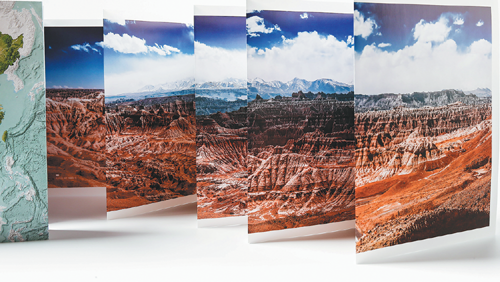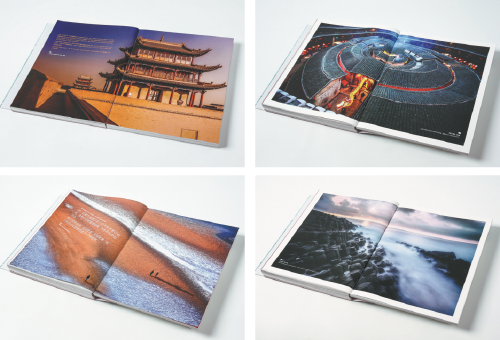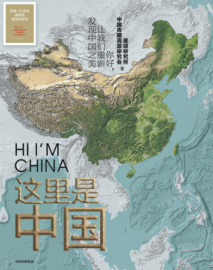App star
A book on China's geography, based on articles published by a WeChat account, is a hot seller, Wang Ru reports.

On Nov 17, 2016, Geng Huajun went to bed after posting an article titled "What would you see if you made your way to Mount Everest's summit?" on his WeChat account, Institute for Planets.
When he got up the next morning, he was surprised to find the article had become popular overnight. It was read over 3 million times and earned the account some 60,000 followers.
Before that, Geng ran the untitled account to popularize geographical and cultural knowledge by himself as a geography lover. And his account only had 2,000 followers.
From then on, Institute for Planets has been promoting long-form articles about geographical conditions of many places in China and overseas, and is attracting more and more fans.
Institute for Planets published its first book, Hi I'm China, in September, which includes 16 articles that have already been promoted on the WeChat account introducing different parts of China, with some minor modifications. So far, the book has sold 300,000 copies and scored 8.2 points out of 10 on the popular review site Douban.
Zhang Xin, editor of the book, published by Citic Press Group, says: "Each Institute for Planets article is written in strict logic, with rigorous textual research, so we wanted to help them publish the book.
"It is considered to be a book of geological and cultural popularization. People can get to know geographical features of many places and how the local culture and customs have developed due to the geological conditions."
The book introduces 16 places in China, classified by their terrain. Each place is introduced through its features, accompanied by explanatory passages and beautiful photos.
"Generally, the book describes places in China from the highlands to the flatlands, from the wild to the urban," says Geng, who now heads a 20-odd team that operates Institute for Planets.
Geng points out the necessity for publishing this book: "Chinese people do not have enough understanding of Chinese geography.
"We had less clarity about China's geographical conditions until New China was established in 1949, when many research teams were organized to explore the geographical conditions. And only after that, in the 1980s, we started to have the technological means to show the results."
Moreover, the geographical books in China that have already been published are either complex professional books or books for teenagers, Geng adds. He says a book for all ages, including those that may not have an educational background in geography, was needed.
As a result, this book was pitched toward the general public.
Each article that Geng and his colleagues write for the WeChat account is quite long compared with other articles people read online, and takes readers about 20 minutes to read each on average. The number of followers, which is now around 2 million, are usually people who live in the bigger cities like Beijing and Shanghai, and the provinces of Guangdong, Jiangsu and Zhejiang.
"We advocate deep reading on mobile phone, and that is one of our features," Geng says.
He describes how his team members write articles. Now there are 25 people in Institute for Planets, and they are separated into three project teams, working on different projects simultaneously.
"When we write an article, we first decide the theme. Then we try to read as much background material about the theme before we start writing. We do not focus only on geography but also other fields to make our theme quite clear to our readers," Geng adds.
"A good article comes from the painstaking process of digesting all the material and extracting the key points. We spend 15 to 20 days on each article on average."
Geng and his team wrote an article introducing Wuhan city, in Central China's Hubei province, and it soon gained popularity. By focusing on Wuhan's feature as the city with the largest water area in China, it describes Wuhan's water networks, its role in China as a port in history and people's lives in modern times, shaped by its geology and culture.
"We carefully summarized the city's features and comprehensively introduced it in an article of around 5,000 words. The photos we used are suitable for viewing on a horizontal screen, which many readers like," he says.
Douban user "antingjiangshangke" wrote: "The photos in this book are very impressive, raising my interest in China's natural scenery, and I'd like to travel to the places it featured."
Beautiful photos are another feature of Institute for Planets' articles. Normally, dozens of photos can be found in each of their articles. The book contains 365 carefully-chosen photos taken by various photographers. The team are in contact with over 3,000 photographers and often buy photos from them. They also buys images from specialty map shops.
Geng also has some regrets about the book. For example, there are not many words as he had hoped in the book. And although it is a book about China's geography, many places in China with impressive geographical features were not included.
"It's just the beginning. We cannot cover every part of China, but we welcome suggestions from readers and will continuously improve our work in the future," says Geng.



Today's Top News
- Another sign of Japan's right-wingers' dangerous ambition to break free of all postwar constraints
- Hainan's special customs operations start strong
- Macao SAR holds flag-raising, reception to mark 26th anniversary of return to motherland
- China issues rules to regulate pricing practices of internet platforms
- US hits over 70 IS-linked targets in Syria in massive retaliatory strikes
- Coffee needs cooperation, not confrontation






























